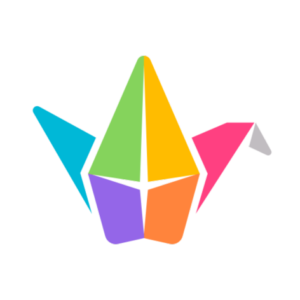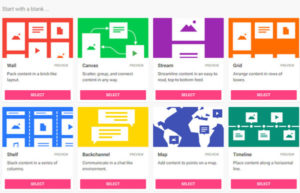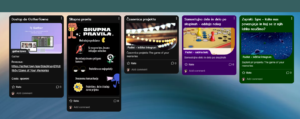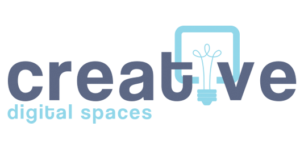
How to set it up?
Padlet is available in 42 different languages, but unfortunately, Slovenian is not one of them. It works via a computer and mobile phone apps (Android and iOS).
Padlet has a free and a paid version. The free version allows the creation and storage of up to three padlets. To survive on a free account, you can delete or archive a padlet after use to make room for a new one.
Three versions are available – for personal, business, and school use. Padlet Gold is a paid version (4,99€/month), which allows one to own 20 active padlets and upload files up to 100 MB in size.
No registration is required to use Padlet as long as you are a participant and do not wish to create padlets. To access the content, one of the above-mentioned internet browsers must be installed, but access problems may occur if the browser is not up-to-date. You must create a user account to share your padlets. It also allows you to log in with a Google, Microsoft, or Apple account.
How to use it in practice?
 It is easy to use, flexible, and offers good technical support. It allows you to create different types of padlets – from digital walls and canvases to grids and timelines.
It is easy to use, flexible, and offers good technical support. It allows you to create different types of padlets – from digital walls and canvases to grids and timelines.
Our padlets can be public and open to all or accessible and viewable only to those we choose. Only when we invite participants they can access the information on our canvas, which is handy when running workshops, events, and training sessions. So, in one part of the process, we can open the first one for brainstorming, where everyone invited writes down their ideas, and in the next, we can open the second one, where participants ask questions on their minds.
We create the padlet according to the needs and requirements of what we are making it for. It allows for countless possibilities and combinations of uses, a testament to its flexibility. Once we have finished creating a wall, we click on publish, which enables sharing. We can publish grocery lists, flow charts, discussions, group cards and photos, business and action plans, project timelines, a map of our favorite world landmarks, etc.
It saves changes automatically; the user interface is designed around people’s needs. It works intuitively, and you can add material to the wall with a few simple movements – click, copy and paste, or drag and drop what you want to the right place. Content can be shared via a link and also a QR code. It also integrates well with other tools and apps (e.g., Google Classroom).
It supports various file types – from Photoshop to Spotify – and each added link comes with a preview to give participants an idea of what it’s all about. No design experience is required. We can decorate each padlet with different backgrounds, from animations to images of a meadow in bloom, and choose the appropriate font.
When we invite someone to participate in a joint padlet, we must pay attention to a few things. First, if we can’t share it, we need to review the privacy settings. If the padlet is hidden, it will not be accessible to others. The same applies to vice versa. If we want to keep it private, we need to check our privacy settings. In addition to these options, padlet can be assigned different access rights. We can enable read-only, but if we want participants to collaborate through it, we can also enable writing. The other two options are moderator and admin. The settings can be changed anytime to increase or decrease access rights.
When working in groups, we can use it to comment (even anonymously) on the work of others and stimulate debate.
What are good practice examples?
At the beginning of the workshop and in the getting-to-know-you phase, we can use the map option, where everyone marks where they are from. The map also works well when people describe their favorite spots or indicate where they have encountered examples of good practice.
 We can use it to create a timetable to show or interactively generate the flow of the day. In longer training sessions or group processes, it can act as a container, and we collect all the material we have created on it, where it is available and in sight for all to see.
We can use it to create a timetable to show or interactively generate the flow of the day. In longer training sessions or group processes, it can act as a container, and we collect all the material we have created on it, where it is available and in sight for all to see.
The Padlet can serve as a digital shelf where we collect digital board games. Group members can meet online and choose a game from the offer.
Padlet will be especially useful for conference organizers who experience slow tool performance when many people (100+) show up simultaneously. Padlet works seamlessly in such cases, so we can easily collect questions from participants and share summaries.
For project leaders, a timeline is helpful to track the progress of the project – where we are, when something is happening, who is doing what, what has already been done, etc.
Because it is such a versatile tool, it can support many groups, from initiators to event organizers and trainers.
What are its features that support inclusion?
The Padlet team is working on better accessibility as they are aware of being behind it.
But for now, Padlet is compatible with screen reader software (such as Apple VoiceOver). Posts can be read out aloud. Currently, you can navigate the login page and dashboard using only your keyboard. Posts on a padlet board can be created and navigated using the keyboard, but settings cannot be changed.
Their progress can be followed here.
What are alternatives?
The most known alternative is Jamboard (which will be discontinued in 2024), but we can find numerous other tools like Dotstorming, Lino, and Pinside, as well as more advanced ones like Mural and Miro.
Padlet’s strengths are that it is straightforward to use, extremely flexible, and reliable for a more significant number of participants.
